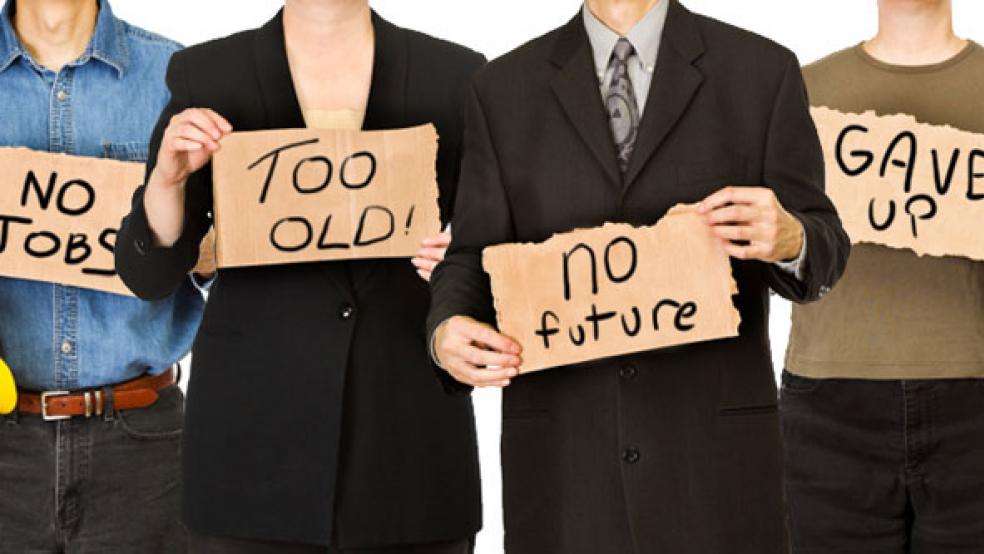The ranks of long-term unemployed Americans hovered near record levels last month, even as the overall unemployment rate dipped slightly to 9.1 percent. Nearly half of all the unemployed have been out of work for more than six months. Experts warn that the plight of these jobless people will only increase as they exhaust their unemployment benefits and states struggling to balance their budgets cut back benefits.
Some 6.2 million of the 13.9 million Americans who were unemployed in July have been jobless for more than 27 weeks, according to Labor Department statistics. Those long-term unemployed make up four percent of the entire U.S. labor force, up more than 400 percent since 2007, when the long-term unemployed constituted only 0.8 percent of the labor force.
“These extended periods of unemployment have serious ramifications for households and their economic future,” Valerie Rawlston Wilson, vice president of the National Urban League Policy Institute, told the Fiscal Times.
That’s because people are less likely to find new jobs, their skills may become rusty, they may become depressed, they may lose extended unemployment insurance (UI) benefits, and they turn to other government programs and charity, according to Wilson. Moreover, those without a job for more than a year are less than one-third as likely to find a new job as those unemployed for less than five weeks.
The average duration of joblessness has hit 40 weeks, and the number out of work more than a year has doubled from 2.3 million in 2009 to more than 4.5 million today, according to the Labor Department’s Bureau of Labor Statistics A little more than two million Americans were were jobless for at least 99 weeks – more than triple the number as recently as August 2009, well into the Great Recession.
“These numbers began escalating last year,” said Mary Bowler, a BLS analyst. The totals exclude 2.8 million out-of-work Americans not counted as unemployed because they simply gave up looking for work during the preceding four weeks.
Apart from the personal tragedy and hardship it causes, experts say long-term unemployment harms the overall economy by reducing federal revenues; increasing government payments for extended unemployment insurance benefits, food and health-care assistance; and reducing national output, according to the Pew Economic Policy Group.
Even with federal unemployment benefits of up to 99 weeks through December—beyond the typical 26 weeks of state benefits—approximately four million Americans have run out of benefits, according to the National Employment Law Project. Joshua Lamont, a Labor Department spokesman, estimated that the number of “exhaustees” is expected to grow by 1.4 million between July and December.
The already dire straits of the long-term unemployed are becoming worse as fiscally strapped states cut the time that unemployed workers can receive benefits. In March, Michigan slashed the basic 26 weeks of state-paid benefits to 20 for workers who lose their jobs next year. Missouri and South Carolina followed suit, while Florida cut benefits from 26 to 23 weeks. Meanwhile, Utah and Missouri officials have refused federal dollars for extended benefits, and several other states have allowed the extended federal benefits to end by failing to take action to remain in the program.
In June, the Arizona legislature did not enact a technical change needed to accept federal cash that would extend unemployment checks from 79 to 99 weeks for at least 15,000 Arizonans. Some lawmakers argued that the extension of benefits, worth up to $240 weekly in Arizona, is a disincentive to find another job.
These reductions and the likely end of federal extended benefits “pull the rug out from under workers in a tough economy,” said Maurice Emsellem, co-policy director of the National Employment Law Project.





